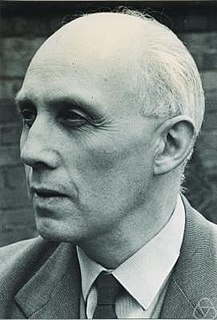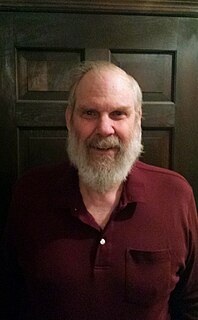Related Research Articles

Ronald Lewis Graham was an American mathematician credited by the American Mathematical Society as "one of the principal architects of the rapid development worldwide of discrete mathematics in recent years". He was president of both the American Mathematical Society and the Mathematical Association of America, and his honors included the Leroy P. Steele Prize for lifetime achievement and election to the National Academy of Sciences.

Richard Rado FRS was a German-born British mathematician whose research concerned combinatorics and graph theory. He was Jewish and left Germany to escape Nazi persecution. He earned two Ph.D.s: in 1933 from the University of Berlin, and in 1935 from the University of Cambridge. He was interviewed in Berlin by Lord Cherwell for a scholarship given by the chemist Sir Robert Mond which provided financial support to study at Cambridge. After he was awarded the scholarship, Rado and his wife left for the UK in 1933. He was appointed Professor of Mathematics at the University of Reading in 1954 and remained there until he retired in 1971.

A tournament is a directed graph (digraph) obtained by assigning a direction for each edge in an undirected complete graph. That is, it is an orientation of a complete graph, or equivalently a directed graph in which every pair of distinct vertices is connected by a directed edge with any one of the two possible orientations.

László Lovász is a Hungarian mathematician and professor emeritus at Eötvös Loránd University, best known for his work in combinatorics, for which he was awarded the 2021 Abel Prize jointly with Avi Wigderson. He was the president of the International Mathematical Union from 2007 to 2010 and the president of the Hungarian Academy of Sciences from 2014 to 2020.
Cecil Clyde Rousseau, Jr. was a mathematician and author who specialized in graph theory and combinatorics. He was a professor at The University of Memphis starting in 1970 until retiring in 2008, and was involved with USAMO in many capacities, including serving as chair.
Sharadchandra Shankar Shrikhande was an Indian mathematician with notable achievements in combinatorial mathematics. He was notable for his breakthrough work along with R. C. Bose and E. T. Parker in their disproof of the famous conjecture made by Leonhard Euler dated 1782 that there do not exist two mutually orthogonal latin squares of order 4n + 2 for any n. Shrikhande's specialty was combinatorics, and statistical designs. Shrikhande graph is used in statistical designs.

Václav (Vašek) Chvátal is a Professor Emeritus in the Department of Computer Science and Software Engineering at Concordia University in Montreal, Quebec, Canada and a Visiting Professor at Charles University in Prague. He has published extensively on topics in graph theory, combinatorics, and combinatorial optimization.
András Hajnal was a professor of mathematics at Rutgers University and a member of the Hungarian Academy of Sciences known for his work in set theory and combinatorics.
Renu Chakravarti Laskar is an Indian-born American mathematician, specializing in graph theory. She is Professor Emerita of Mathematical sciences at Clemson University. She received her Ph.D. in Mathematics from the University of Illinois at Urbana-Champaign in 1962.
Douglas Brent West is a professor of graph theory at University of Illinois at Urbana-Champaign. He received his Ph.D. from Massachusetts Institute of Technology in 1978; his advisor was Daniel Kleitman. He is the "W" in G. W. Peck, a pseudonym for a group of six mathematicians that includes West. He is the editor of the journal Discrete Mathematics.
Ernest Tilden Parker (1926–1991) was a professor emeritus of the University of Illinois at Urbana–Champaign. He is notable for his breakthrough work along with R. C. Bose and S. S. Shrikhande in their disproof of the famous conjecture made by Leonhard Euler dated 1782 that there do not exist two mutually orthogonal latin squares of order for every . He was at that time employed in the UNIVAC division of Remington Rand, but he subsequently joined the mathematics faculty at The University of Illinois. In 1968, he and a Ph.D. student, K. B. Reid, disproved a conjecture on tournaments by Paul Erdős and Leo Moser.
George Barry Purdy was a mathematician and computer scientist who specialized in cryptography, combinatorial geometry and number theory. Purdy received his Ph.D. from the University of Illinois at Urbana–Champaign in 1972, officially under the supervision of Paul T. Bateman, but his de facto adviser was Paul Erdős. He was on the faculty in the mathematics department at Texas A&M University for 11 years, and was appointed the Geier Professor of computer science at the University of Cincinnati in 1986.

György Hajós was a Hungarian mathematician who worked in group theory, graph theory, and geometry.

Stefan Andrus Burr is a mathematician and computer scientist. He is a retired professor of Computer Science at The City College of New York.
Miklós Simonovits is a Hungarian mathematician who currently works at the Rényi Institute of Mathematics in Budapest and is a member of the Hungarian Academy of Sciences. He is on the advisory board of the journal Combinatorica. He is best known for his work in extremal graph theory and was awarded Széchenyi Prize in 2014. Among other things, he discovered the method of progressive induction which he used to describe graphs which do not contain a predetermined graph and the number of edges is close to maximal. With Lovász, he gave a randomized algorithm using O(n7 log2n) separation calls to approximate the volume of a convex body within a fixed relative error.
Wojciech Samotij is a Polish mathematician who works in combinatorics, additive number theory, Ramsey theory and graph theory.
József Balogh is a Hungarian-American mathematician, specializing in graph theory and combinatorics.
Neil J. Calkin is a professor at Clemson University in the Algebra and Discrete Mathematics group of the School of Mathematical and Statistical Sciences. His interests are in combinatorial and probabilistic methods, mainly as applied to number theory.